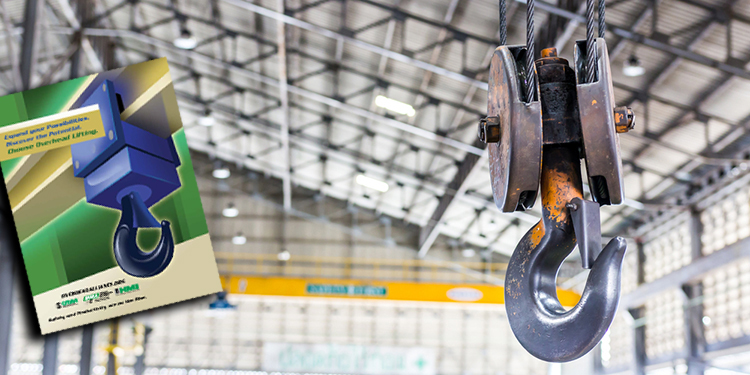Meet Environmental Stewardship Goals With Sustainable Overhead Lifting Equipment

This is the tenth in a series of posts detailing 13 reasons why overhead lifting and handling technologies — specifically cranes, hoists, and monorails — can improve a manufacturing or distribution operation’s efficiency, productivity, safety, and sustainability. Read more in the free Overhead Alliance publication, “Expand Your Possibilities. Discover the Potential. Choose Overhead Lifting.”
Recognizing that the Earth’s resources are not infinite, more organizations are prioritizing better stewardship of the planet. Many have initiatives and sustainability goals to reduce their carbon footprint, cut waste, and be more energy efficient. Further, consumers are increasingly spending with companies they perceive to be environmentally responsible. Which means facilities are taking a closer look at the material handling equipment they use. Notably, although not typically the first solution envisioned when thinking green, cranes, hoists, and monorails are indeed environmentally friendly. Here are four ways companies can meet their environmental stewardship goals with sustainable overhead lifting equipment.
1. Eliminate Emissions with Sustainable Overhead Lifting Equipment.
Unlike petroleum-powered material handling equipment used for load transport and placement, cranes, monorails, and hoists do not generate emissions. Floor-based motorized vehicles contribute to air pollution and are subject to regular emissions testing. They also require a facility to utilize special ventilation to ensure proper air quality for personnel. Powered by electricity, sustainable overhead lifting equipment has a significantly lower carbon footprint as well.
2. Earth-Friendly Cranes, Hoists, and Monorails Are Leak- and Contaminant-Free.
Because they operate with vastly fewer moving parts than ground-based vehicles, overhead lifting systems are significantly less likely to leak oils and other fluids. When not properly handled, these pollutants could cause ground contamination, hampering sustainability efforts. Further, battery-powered load handling equipment requires replenishment of both water and acids, which can be harmful if spilled. Many floor-based vehicles run on batteries that can leak, are difficult to store, and can be a hassle to properly dispose of or recycle. Failing to manage batteries properly can also harm the environment. Additionally, cranes, monorails, and hoists do not necessitate an investment in contaminant detection, containment, and mitigation equipment.
3. Utilize Existing Overhead Space Better for a More Sustainable Footprint.
Load storage can reach higher heights with sustainable overhead lifting equipment than with floor-based load handling vehicles. These higher lifting elevations allow an operation to maximize the cubic volume of its existing facility. The upshot? An operation outfitted with cranes, monorails, and hoists enables the handling of more products in the same facility footprint. There is no need to acquire and use more land to expand the footprint of the facility or acquire additional square footage. Optimizing the size of the building with cranes, monorails, and hoists also dramatically reduces the energy required to heat, cool, and illuminate the operation.
4. Sustainable Overhead Lifting Equipment Reduces Product Damage and Waste.
Equipped with load-specific attachments and controllers that ensure steady, predictable movement, overhead lifting equipment reduces product damage. Unlike motorized, floor-based material handling vehicles that must navigate blind corners, tight turns, narrow spaces, building structures, and personnel, products lifted overhead glide through clear space high above the ground. This substantially reduces the risk of a collision that damages products, leading to waste and scrap that may end up in a landfill.

Looking for additional details on how overhead handling equipment can improve your operations? Download the free publication, “Expand Your Possibilities. Discover the Potential. Choose Overhead Lifting.” Published by MHI’s Overhead Alliance (which includes the Crane Manufacturers Association of America (CMAA), the Hoist Manufacturers Institute (HMI), and the Monorail Manufacturers Association (MMA)), the document explores 13 different ways these technologies enhance manufacturing and distribution operations across a broad range of industries.




